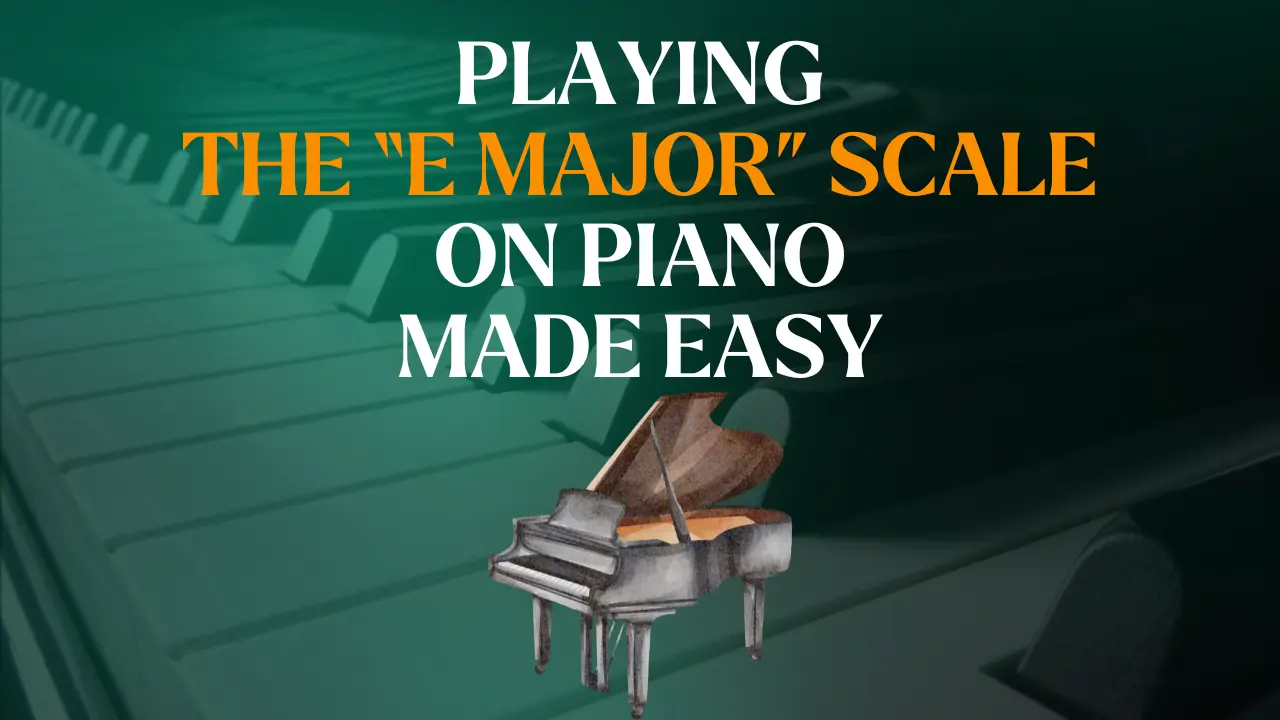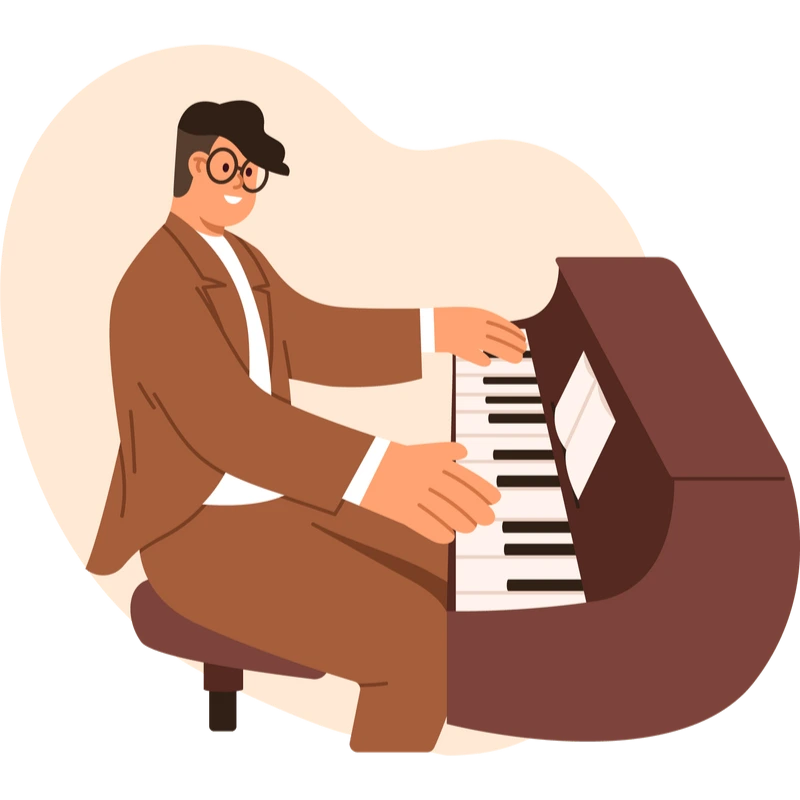A music scale refers to music notes played in a sequence ordered by pitch or frequency. They are fundamental building blocks which make up the foundation for chords, melodies and harmonies. Similar to how we stretch before playing a game, scales provide a warm up and good stretch for smooth hand movement while playing a piece. This blog is about E Major Scale-Piano. Lets not wait anymore and dive into the blog.

Colour is the keyboard, the eyes are the harmonies, and the soul is the piano with many strings. The artist is the hand that plays, touching one key or another, to cause vibrations in the soul.”- Wassily Kandinsky
Tones and Semitones
First things first! Scales start and end on the same note – the TONIC and consist of a very specific pattern of whole steps and half steps.
To understand whole steps and half steps, it is important to look at the piano as a set of keys instead of a set of separate black keys and white keys.
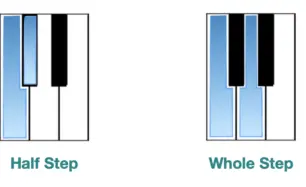
A half step or semitone is the shortest distance between two keys that are one after another, whether black or white. When you move from one key to the very next key, whether going up or coming down, you move a half step’s distance.
A whole step or tone covers a distance of two half steps. What this means is that you skip one key in between, whether black of white, when moving from one note to the next.
Let’s practice with a few examples!
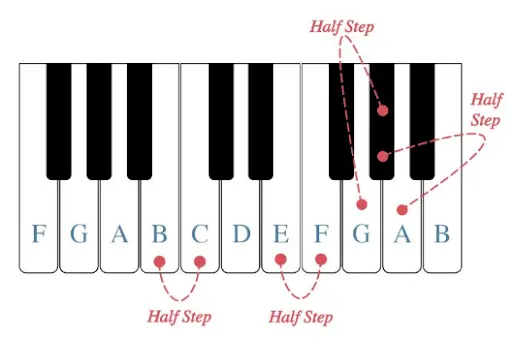
If you’re on a F and you move up a whole step, you’ll find yourself on a G and if you move up another whole step from G, you’ll land on the A. Now, if you move only a half step from F, you’ll land on a F# and if you go down a half step from F, you’ll find yourself on the E since there is no other key that falls between the E and F.
All major scales follow the same pattern of tones and semitones.
Tone-Tone-Semitone-Tone-Tone-Tone-Semitone
Recognizing these steps, also called intervals, are essential for constructing scales, melodies and chords as they determine the distance between notes and lay down the pattern for overall sound of the music.
Key signature
Key signature tells us which sharps and flats are to be used in a piece along with the major or minor key in which the piece is written. All major and minor keys are associated with their own distinct key signatures much like our very own signatures. You’ll always find the key signature at the beginning of a piece placed right in between the clef and time signature.
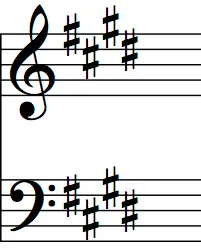
The E major key signature has four sharps – F#, C#, G#, D#.
Remember that these four notes are automatically sharps throughout a composition written in the key of E major, unless otherwise indicated.
Notes of E major scale- Piano:
E F# G# A B C# D# E
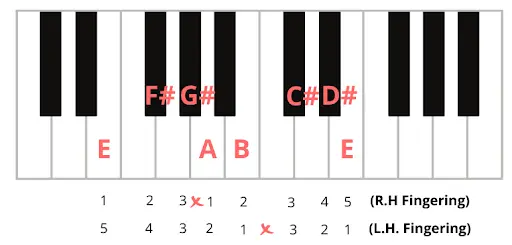
Finger numbers for going up and coming down-
RH 1 2 3 1 2 3 4 5 4 3 2 1 3 2 1
LH 5 4 3 2 1 3 2 1 2 3 1 2 3 4 5

Did You Know?
The piano was invented by Bartolomeo Cristoffori of Padua, Italy. He made his first piano in 1709.
Practice the scale using the correct finger numbers and focus on the cross movement.
Let’s look at the tone pattern of E major scale:
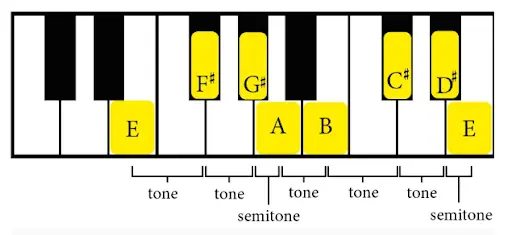
Remember the following things while practising scales!
- Finger pattern: Scales follow a specific finger pattern for smooth and efficient movement across keys.
- Hand posture: Focus on maintaining correct hand position and posture, keeping your fingers curved and moving the wrist in the direction of the keys to help with agility.
- Standard tempo: As you play, listen for even and consistent rhythm of notes. You can practice with a tempo or metronome for a balanced sound.
- Starting off slow: Focus on accuracy in hitting each note. Increase the speed of the scale gradually as you become more comfortable.
- Relax: It is normal to get tense in your arms and wrists as you practice scales. Be aware of this tense feeling and keep your muscles relaxed to avoid fatigue.
E Major in songs:
Here are some famous classical songs composed in E Major showcasing the versatility and beauty of the scale. Give them a listen to develop tone and recognize the E Major sound.
- Frédéric Chopin – Nocturne in E Flat Major, Op. 9 No. 2
- Franz Schubert – Impromptu in E Flat Major, Op. 90 No. 2
- Ludwig van Beethoven – Piano Sonata No. 14 in E Flat Major, Op. 27 No. 1 (Moonlight Sonata)
- Sergei Rachmaninoff – Prelude in E Major, Op. 32 No. 3
Fun facts about E Major:
- Adventure: Most heroic soundtracks in movies and video games are written in E major to deliver a sense of adventure.
- Common key for modulation: The E Major is a famous modulation key, meaning that a piece might start in one key and then ‘modulate’ to E major for a shift in mood and intensity.
- Open nature: Musicians often associate the E Major key with a feeling of openness, comparing it to the nature or sky.
Practice section
Let’s apply what we’ve learnt and practice the given section written in the key of E major!
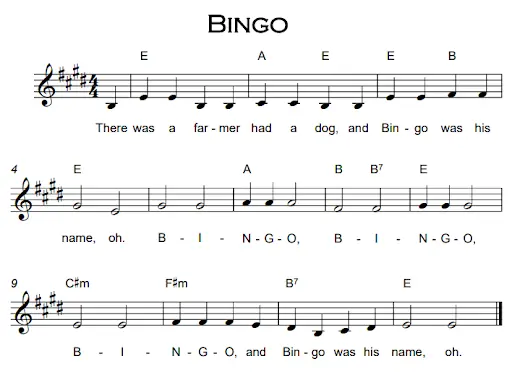
Reading Bass Clef Notes on Piano is also an important topic to cover when it comes to learning Piano
FAQs
E Major Scale Piano – Explain.
The E major key signature has four sharps – F#, C#, G#, D#. Remember that these four notes are automatically sharps throughout a composition written in the key of E major, unless otherwise indicated.
Explain how to play the E major Scale On Piano?
Finger numbers for going up and coming down-
RH 1 2 3 1 2 3 4 5 4 3 2 1 3 2 1
LH 5 4 3 2 1 3 2 1 2 3 1 2 3 4 5
Mention the notes in the E major scale on piano?
The notes of the E Major Scales on Piano are E F# G# A B C# D# E.
List out a few songs set in E major scale on Piano?
Frédéric Chopin – Nocturne in E Flat Major, Op. 9 No. 2
Franz Schubert – Impromptu in E Flat Major, Op. 90 No. 2
Ludwig van Beethoven - Piano Sonata No. 14 in E Flat Major, Op. 27 No. 1 (Moonlight Sonata)
Sergei Rachmaninoff – Prelude in E Major, Op. 32 No. 3
Where can I learn and play the E major scale effectively on Piano?
This blog gives you an elaborate idea about the E Major scale and you can also enrol yourselves with MUSIC MASTER to start learning the art.


